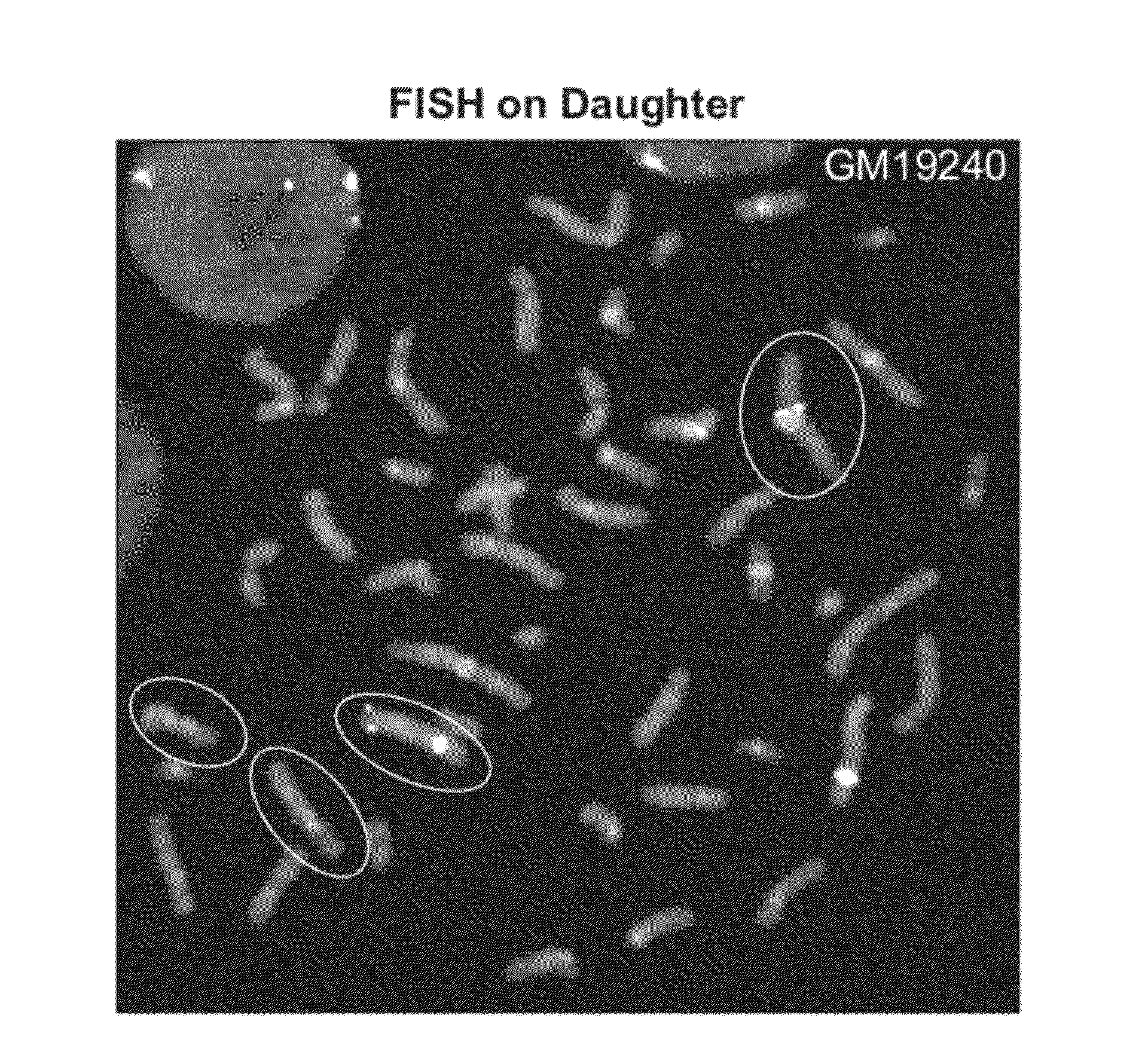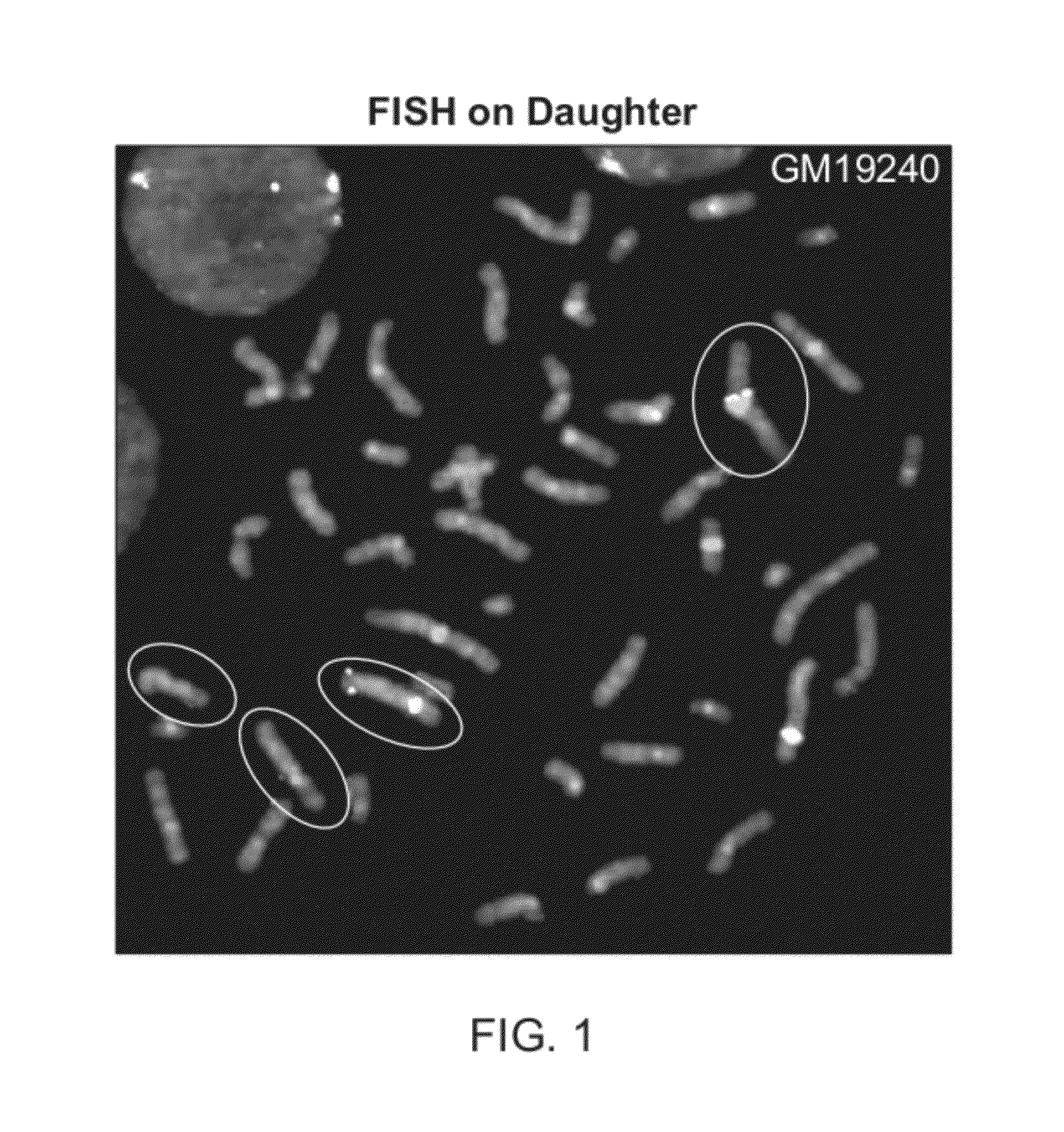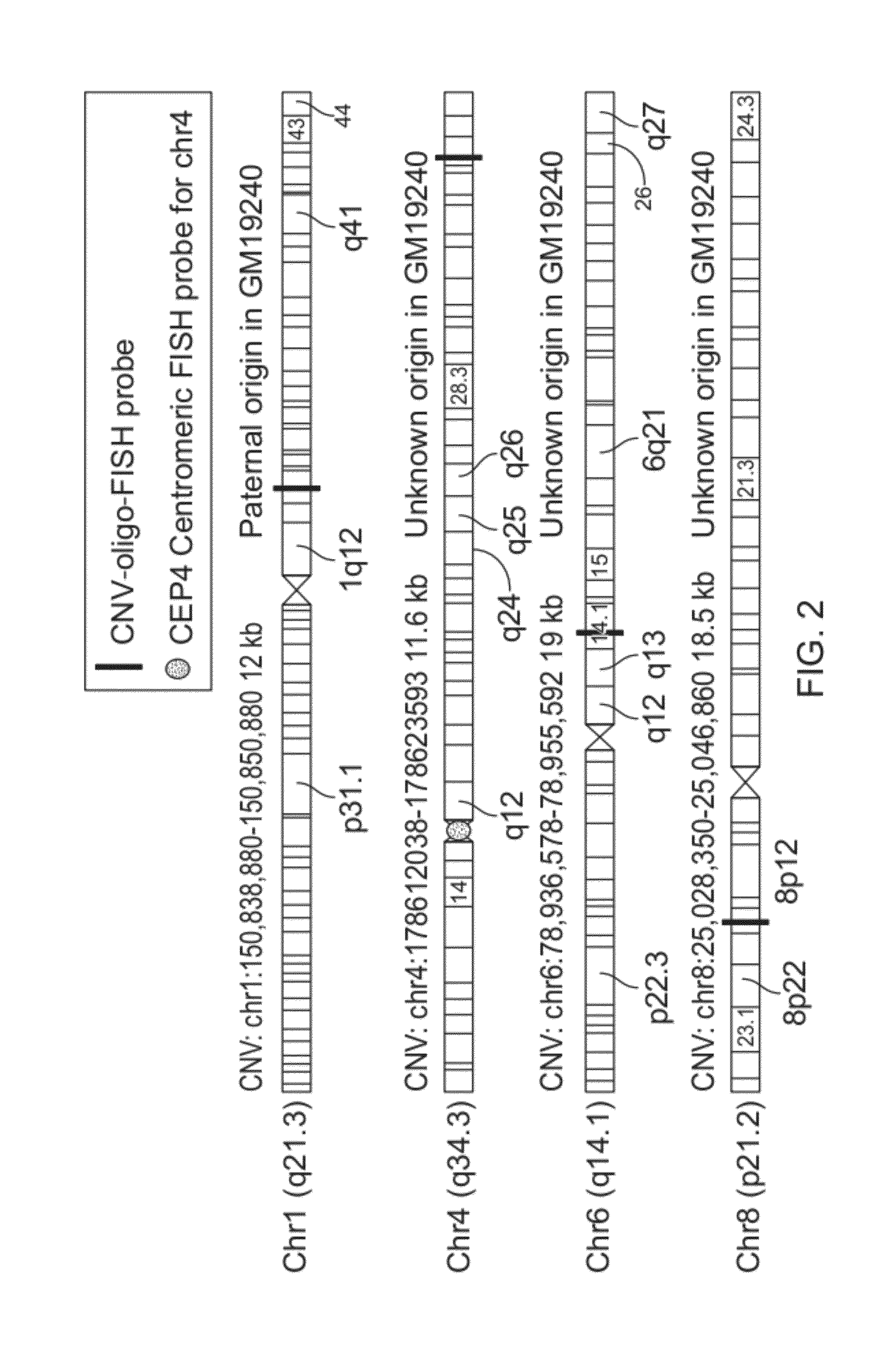Method for phased genotyping of a diploid genome
a technology of phased genotyping and diploid genome, applied in the field of phased genotyping of a diploid genome, can solve the problems of inability to determine whether multiple snps or cnvs, and the majority of genotyping and sequencing methods, and achieve the goal of correlated snps across large alleles for a given mammalian sample, and achieve the effect of reducing the number of snps in the array and reducing the number o
- Summary
- Abstract
- Description
- Claims
- Application Information
AI Technical Summary
Problems solved by technology
Method used
Image
Examples
examples
[0141]The following examples are put forth so as to provide those of ordinary skill in the art with a description of how to make and use some embodiments of the present invention, and are not intended to limit the scope of what the inventors regard as their invention.
CNV-FISH Chromosomal Identification
[0142]Parent-of-origin specific identification of chromosomes has been demonstrated using oligo-FISH probes. The sample used for this demonstration is a cell-line derived from the daughter of a family trio from Yoruba, Africa. This sample consists of metaphase chromosome preparation on a glass slide using cells of a lymphoblastoid cell-line from Coriell Cell Repositories for HapMap sample GM19240. This sample was previously characterized in various publications, including Campbell et al (AJHG, 88, 317-332, 2011), Mills et al (Nature, 470: 60 2011) and Conrad et al (Nature 2010 464: 704-1). From the published data, a list of CNVs for which the genotypic states of the CNVs are known for ...
PUM
| Property | Measurement | Unit |
|---|---|---|
| Electric charge | aaaaa | aaaaa |
| Fluorescence | aaaaa | aaaaa |
Abstract
Description
Claims
Application Information
 Login to View More
Login to View More - R&D
- Intellectual Property
- Life Sciences
- Materials
- Tech Scout
- Unparalleled Data Quality
- Higher Quality Content
- 60% Fewer Hallucinations
Browse by: Latest US Patents, China's latest patents, Technical Efficacy Thesaurus, Application Domain, Technology Topic, Popular Technical Reports.
© 2025 PatSnap. All rights reserved.Legal|Privacy policy|Modern Slavery Act Transparency Statement|Sitemap|About US| Contact US: help@patsnap.com



